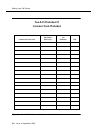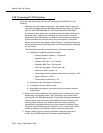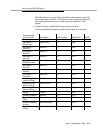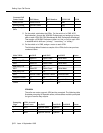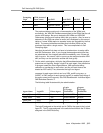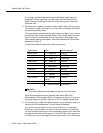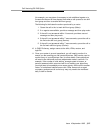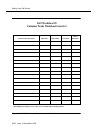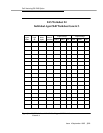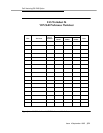
Call Vectoring/G3 EAS Option
Issue 4 September 1995
J-15
(for example, you may deem it necessary to train additional agents or to
increase the amount of time elapsed from when a call queues to one skill
hunt group and then to another skill hunt group).
The following list indicates the actions produced by a vector:
1. Queue the call to the 1st main skill hunt group (Sales).
2. If no agents are available, provide a message and then play music.
3. If the call is not answered within 10 seconds, provide a second
message and then play music.
4. If the call is not answered within 7 more seconds, queue the call to
the 2nd main skill hunt group (Service).
5. If the call is not answered within 7 more seconds, queue the call to
the 3rd main skill hunt group (Claims).
10. In CMS: Dictionary, assign names to the skills, VDNs, vectors, and
loginIDs.
11. Once your system is up and operational, you will need to monitor it to
ensure you are meeting your call center objectives. CMS can be used to
monitor many of your objectives. See for more details. Some objectives
will need to be monitored and have adjustments made in real time. For
example, if the number of calls waiting, average speed of answer, or
percent answered within a service level is not meeting your objectives,
you might want to immediately move some agents, direct calls to another
vector, or look-ahead interflow some calls. Other items such as agent
occupancy and percent all trunks busy may only need to be monitored
daily to look for trends.




